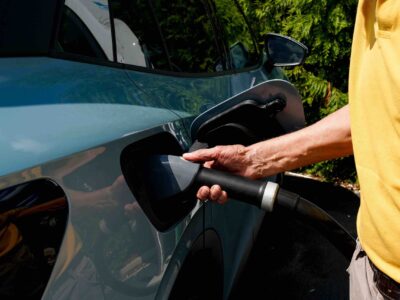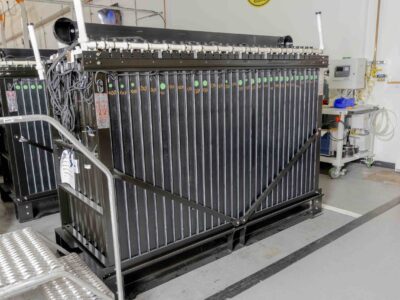(Bloomberg) —
Formula One is a sporting empire complete with rock star drivers, billion-dollar teams and a carbon footprint equal to a small African country. Formula E, its all-electric counterpart, is just a fraction of that in size but is the future of racing.
The two franchises crossed paths recently in the same country for the first time in Japan, just as both are on the cusp of major milestones — Formula E is about to turn 10 and is growing in recognition, while the other is in its final season before it rolls out low emission technology to reach net zero by 2030.
With going green being the clear way ahead for motorsports, FE’s head says its only a matter of time before the upstart catches up with its gas-guzzling sibling.
“Naturally, there comes a point where we will be very favorable compared to” F1, Chief Executive Officer Jeff Dodds said in an interview during the Tokyo E-Prix on March 29, a week before the F1 race at Suzuka. “Whether that means we go on to be bigger than them or we go on to take them over or whatever, I don’t know. All I know at the moment is we have lots of growth still ahead of us.”
Global interest in FE is rapidly increasing as media companies and sponsors bet on rising viewer interest in electronic-vehicle-based sports. FE counts Julius Baer, Allianz SE and DHL Worldwide Express among its partners, while US broadcaster CBS Sports has said it will air more races. Countries including Thailand want to host competitions. Billionaires and sports stars are also getting into the adjacent electric boat racing competition.
To be sure, F1 remains the dominant motor racing franchise in the world, with its fan base continuing to grow outside of Europe after major breakthroughs into the US. Viewers love the glitz and glamor of the races, and the heady sounds of roaring engines and screeching tires.
But growing concerns around sustainability in sports are creating a different type of racing fan that could chip away at F1’s dominance. Dodd said that Formula E has garnered nearly 400 million fans since it started — in comparison, F1 drew some 1.5 billion TV viewers in 2023, but the race is finding new supporters among women and people under 40, Dodds added.
These newcomers are also embracing an entirely new, guilt-free way of enjoying the sport. FE races, like the recent one in Tokyo, tend to be cheaper and more conveniently located. Traveling to races by public transport is the norm.
In F1, the race itself accounts for a fraction of the total emissions, most of which come from transportation and air travel. Nonetheless, it’s still a spectacle in terms of equipment and labor, with large entourages and small mountains of burnt tires often left behind. In contrast, FE teams are much smaller — Nissan’s travels with just 25 people — and are allowed to use only two sets of tires in each race.
In its latest sustainability report published Wednesday, F1 pledged to reduce the amount of equipment and people when traveling.
“It’s about accelerating the migration to electric vehicles, and it’s about accelerating the education globally about the importance of climate change,” said Dodds.
Recent upgrades in FE also show how it doesn’t necessarily have to sacrifice speed. Powered by a 400 kilowatt battery, each car can reach nearly 220 miles per hour (350 kilometers per hour) — and they’re getting faster. The next-generation car is expected to be unveiled later this season with improved efficiency and nearly double the horsepower.
And by testing various technologies at breakneck speeds on circuits in different climates, big manufacturers can use what they learn on the track to make better EVs for public roads, and vice versa.
“If you can survive in FE, it is relatively easy to survive on a normal highway,” said Holger Klein, global CEO of Germany’s ZF Group, one of the world’s largest automotive suppliers and a founding member of the race.
F1 fans understand that the green shift in the sport is inevitable, making the recent Suzuka race a bittersweet affair.
Ryo Tayama, 40, attended with a friend dressed in replica full-body suits embroidered with the name of the recently retired Sebastian Vettel, who once said that the climate crisis and F1’s role in it influenced his decision to leave the sport.
“As much as I love F1, things have to change,” Tayama said. “Becoming carbon neutral is about giving future generations a chance to enjoy motor sports.”
(Updates with detail from new F1 report in 10th paragraph.)
© 2024 Bloomberg L.P.





